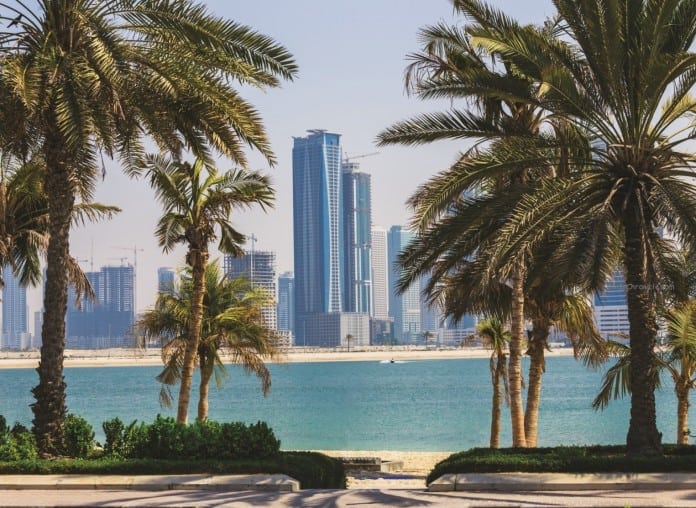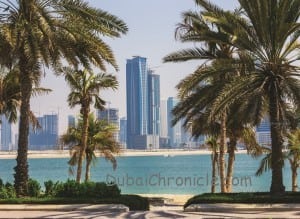
Rents in Sharjah continue to face upward pressure, particularly as the supply pipeline remains limited; however an affordability threshold may be nearing for the villa segment of the residential market, according to the latest research by real estate consultancy Cluttons.
 Cluttons’ Winter 2014 Sharjah Residential Market Outlook report reveals that during Q3, rents across Sharjah increased by 5.3%, in comparison to a 5.7% rise in Q2. In the villa market, the rate of acceleration of rents slowed to just under 7% during the third quarter, from 8.2 % in the second quarter.
Cluttons’ Winter 2014 Sharjah Residential Market Outlook report reveals that during Q3, rents across Sharjah increased by 5.3%, in comparison to a 5.7% rise in Q2. In the villa market, the rate of acceleration of rents slowed to just under 7% during the third quarter, from 8.2 % in the second quarter.
Cluttons’ international research and business development manager, Faisal Durrani commented: “The dip in the pace of rising villa rents is not a reflection of weakening demand, but instead points to an emerging affordability threshold, as average household incomes are failing to keep up with the fast paced growth in rents. Overall, the behaviour of the lettings market in Sharjah reflects what has already occurred in the lettings market in both Abu Dhabi and Dubai and we expect this to persist. The core issue of affordability is expected to start curbing the strong rental value growth that has been recorded over the past 18 months.”
Retaining a lead over villas, the report reveals that apartment rents have increased by 35% in the 12 months to the end of Q3. The strength of tenant demand has persisted throughout the year against a backdrop of relatively static residential supply levels. A lack of alternative options in the market has led to households remaining in situ at renewal, often capitalising on the security offered by the three year Sharjah Municipality ‘rent cap’.
Steve Morgan, Chief Executive of Cluttons, Middle East said: “The shortage of supply means that households looking to reside in the emirate will often settle for what is available, while searching for better quality stock. We expect that the unavailability of stock, along with the rising demand will help to drive a wave of refurbishments across some of the city’s older buildings as landlords move to capitalise on the buoyant conditions.”
Durrani added: “At the United Arab Bank buildings for example, we recorded an uplift of 45% to 55% in rents, following the extensive three-year renovation works carried out at a cost of AED 6 million. The now fully occupied towers were gradually phased back on to the market and leased rapidly; this compares to a circa 80% vacancy rate prior to refurbishment. A large number of similarly aged residential towers exist in other prime locations, and are yet to achieve their full rent potential.”
Cluttons’ report highlights growing demand in the sales market, with the newly launched Tilal Properties releasing residential and commercial land plots at Tilal City’s new master planned community on Emirates Road. The landmark community will for the first time allow non-Arab nationals, with UAE residency visas, to purchase land in the emirate.
Morgan concluded: “As the government continues to ease restrictions on foreign ownership, developers are increasingly turning their attention to gated communities with a key focus on matching the quality of developments seen in suburban Dubai. The emergence of similar freehold schemes will pave the way for investors looking to enter a market where average home values are roughly two-thirds lower than that of Dubai. However, without a proven track record, development financing is likely to remain challenging.
“While the current proposed 20% ceiling on the volume of sales to non- Arabs per scheme will help to curtail the exponential growth seen in Dubai and Abu Dhabi, it will also limit the market’s exposure to an extent as this ruling is likely to translate into a slow, but steady rate of deals.”



















![The Square at Nad Al Sheba Gardens Now Open hope tax season treated you well! Just checking in—ready to refocus on growing your business? I remember how we discussed scaling your [specific aspect of their business, e.g., online presence] but paused due to time constraints. We now offer a streamlined 6-month plan that delivers real results without adding to your workload. Let me know if you'd like to chat—I’d love to help you pick up where we left off!](https://www.dubaichronicle.com/wp-content/uploads/2024/11/The-Square-5-218x150.jpg)













